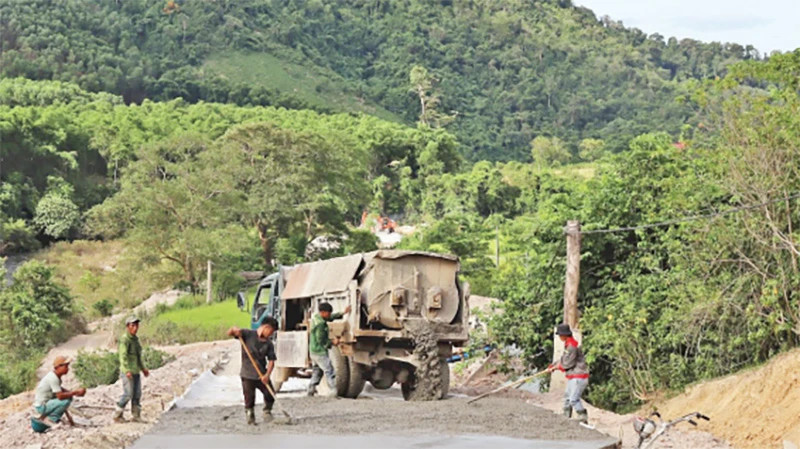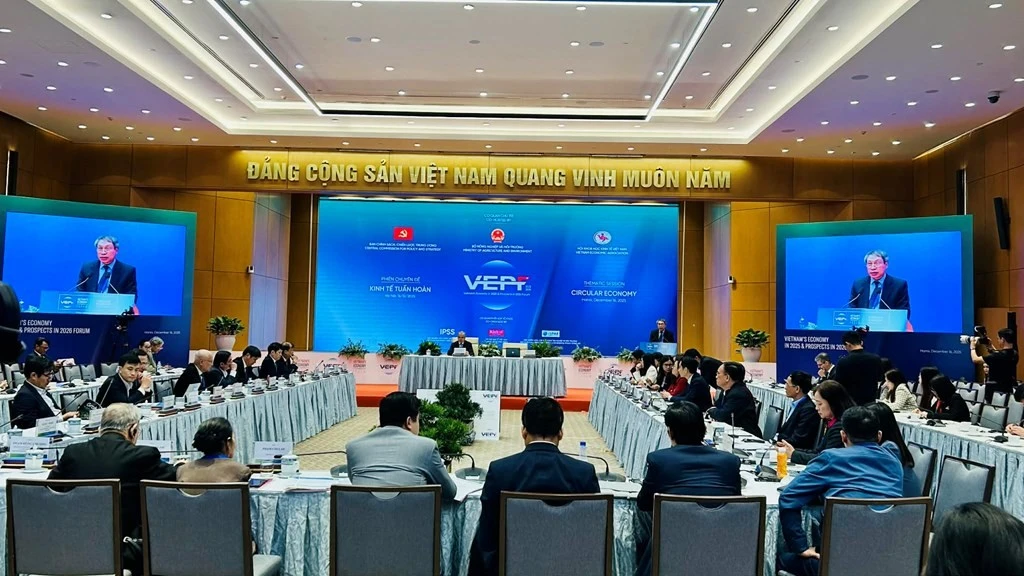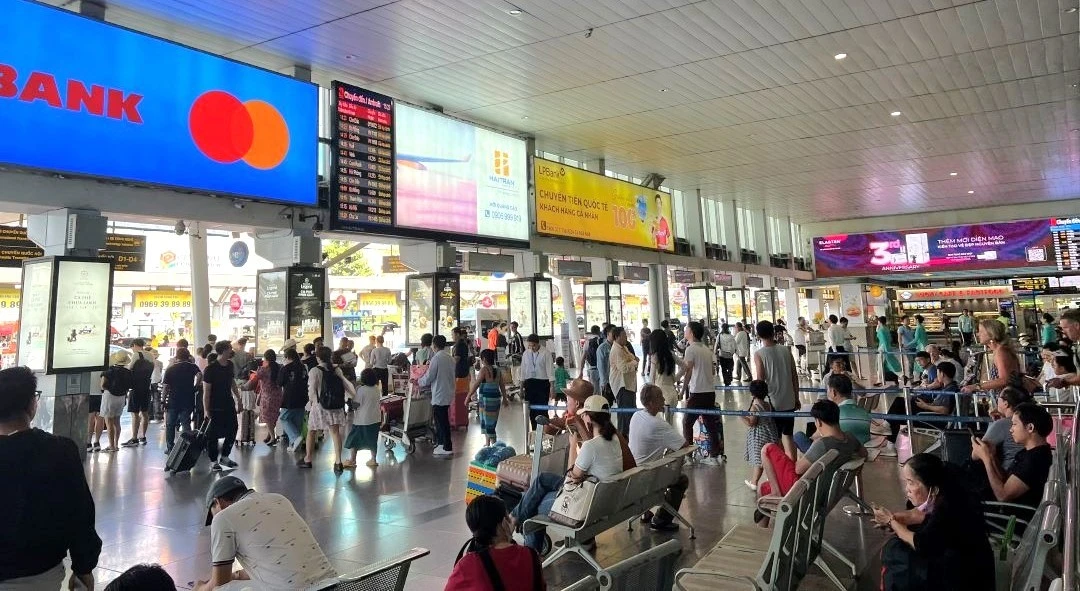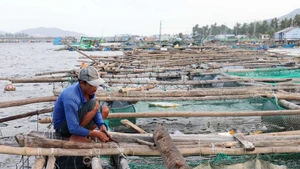This approach helps people promote their role as the main subject, push back the mentality of waiting and relying on others, and create a competitive atmosphere among families, clans, and villages in building new rural areas.
Proud to be a new rural village
Tam Quang border commune, the first commune in Tuong Duong District and Nghe An Province to “reach the finish line” of new rural areas at the end of 2017 is striving to achieve the goal of advancing new rural areas. The appearance of the commune has now changed with asphalt and concrete roads connecting villages, and many houses have been renovated and newly built.
There are five ethnic groups living in the commune, including Thai, Kinh, Kho Mu, Tay Pong, and Dan Lai with nearly 1,900 households. People live mainly on forestry, livestock, and swidden farming. In 2015, the poverty rate of the commune was nearly 60%. When implementing the National Target Programme on New Rural Development, with the goal of completion in the 2018-2020 period, many criteria were considered difficult to achieve.
Thanks to the close direction and priority of resource support from the district, combined with the determination of the Party Committee, government and people, by December 2017, Tam Quang had achieved all 19 new rural criteria, finishing three years ahead of schedule. The average annual income of the people increased to 52.1 million VND/person; the poverty rate decreased from 59.74% (in 2012) to 4.78% (in 2017). As the first village in Tam Quang to meet new rural standards, Bai So Village strongly developed fruit tree planting and large livestock raising models.
Typical examples include the garden-pond-barn farm of Tong Van Chien’s family, the mixed garden conversion model for growing fruit trees of Le Dang Dan’s family, the model of raising fattening cows and breeding pigs of Nguyen Thi Phuong’s family, etc.
Phuong said that in addition to her family’s land area, people borrow more land from households in the village to grow corn, cassava and grass for animal feed. The model of raising fattening cows and breeding pigs brings in an income of more than 200 million VND/year.
Chairwoman of the Tam Quang Commune People’s Committee Kha Thi Hien shared that Tam Quang has identified the target early and determined to implement it with the motto of doing the easy criteria first and mobilising the people to do the content that can be done by ourselves. We focus on propaganda to eliminate the mindset of waiting and relying on the State of the people and the staff.
The commune promotes the role of village elders, and prestigious people, mobilising people to donate land, and assets and contribute money and working days to build new rural areas. Along with that, the commune launched an emulation movement between villages and residential areas, promptly praising typical advanced individuals and collectives, she noted.
In Huu Kiem Commune (Ky Son District), achieving new rural standards has helped Ky Son “eradicate” communes that have not achieved new rural standards. In 2011, when building new rural areas, the rate of poor and near-poor households in the commune was 72.8%. The Party Committee of Huu Kiem Commune has identified developing economic models and increasing people's income as a breakthrough. With the strengths of the locality, Huu Kiem focuses on developing livestock farming under the forest canopy and growing clean vegetables to serve the market in the district.
With many practical measures to support the poor to participate in economic development, the average income per capita has increased significantly from more than 8 million VND/year (2010) to more than 36 million VND/year (2020) and currently reaches nearly 40 million VND/year. The commune has a herd of more than 2,000 livestock and dozens of models of growing red-fleshed dragon fruit, clean vegetables, weaving brocade, and producing rice wine.
Prioritising resources for infrastructure development
The Ky Son District currently has only four villages recognised as meeting new rural standards. In the tasks and solutions to implement the National Target Programme on New Rural Construction in 2025, the district has identified focusing on prioritising resources to support 12 villages (registered in 2021) and seven villages (registered in 2024) to reach the new rural destination.
At the commune level, the district continues to support six communes to complete the roadmap to achieve new rural standards in the 2021-2025 period; striving to bring Nam Can Commune to achieve new rural standards (achieving 15/19 criteria).
Of the 12 communes in Tuong Duong District, four communes have achieved 19/19 criteria. In 2024, the district strives to have five more villages and hamlets meet new rural standards, bringing the total to 14 villages and hamlets. In 2025, the district aims to build Tam Quang Commune to meet advanced new rural standards and seven villages to meet new rural standards.
Vice Chairman of Tuong Duong District People’s Committee Nguyen Huu Hien said after assessing the resources, the district determines the specific conditions of each commune to select appropriate investment content, implementing the criteria while prioritising criteria close to the standard, criteria with great spillover.
Deputy Director of Nghe An Province Department of Agriculture and Environment Vo Thi Nhung shared: In the face of difficulties in the western districts in building new rural areas, the province has issued a set of criteria for new rural villages and hamlets applicable to mountainous and border communes, including 13 criteria, recognised by the Chairman of the District People’s Committee.
The province has a support policy of 500 million VND/commune meeting new rural standards and 600 million VND/advanced new rural commune. Each commune receives 2,800 tons of cement, each village will get 150 tonnes of cement and 15 million VND/standard garden.
After more than 13 years of implementation, Nghe An Province has 275/362 communes meeting new rural standards, accounting for nearly 76%; 102 communes meeting advanced new rural standards and 12 communes meeting model new rural standards; 10 district-level units meeting new rural standards; 223/1,027 villages and hamlets in mountainous districts meeting new rural standards according to the province’s criteria.
At the district level, the Provincial Appraisal Council is completing the dossier to submit to the Central Government for appraisal and recognition of Nghia Dan District meeting new rural district standards.
The Provincial Department of Agriculture and Environment is proposing that the Central Government continue to prioritise and allocate resources to build infrastructure, especially transportation, to create momentum to promote development. In fact, in the past, “removing” communes from the list of communes in Region III immediately after meeting new rural standards was a major obstacle.
The province recommends a more suitable roadmap and increased support policies for building mountainous villages and hamlets that meet new rural standards. “With many new rural villages and hamlets, there will be new rural communes. With many new rural communes, there will be new rural districts”, this is not only a motto but also an effective way for Nghe An to implement the National Target Programme in disadvantaged areas.
















